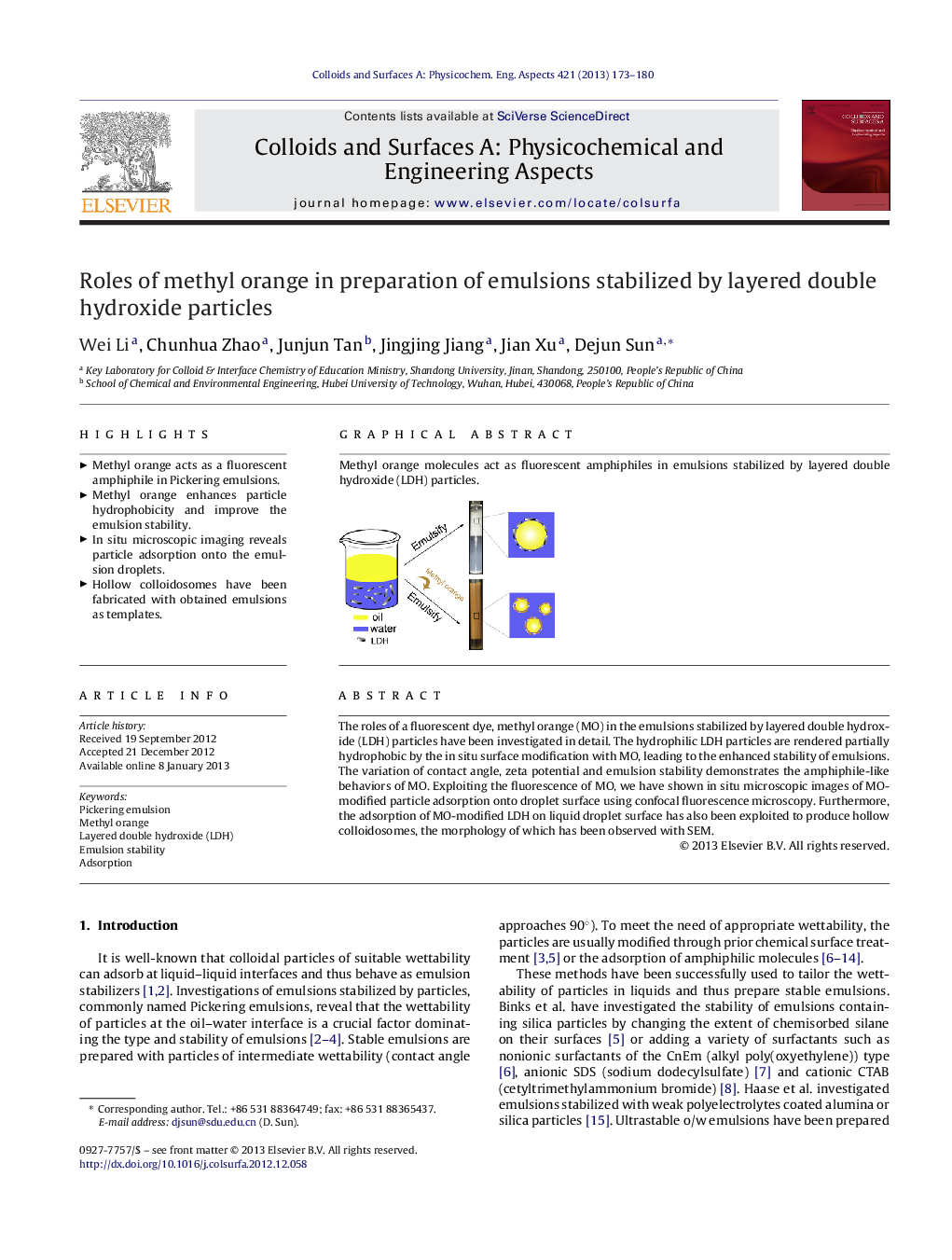| Article ID | Journal | Published Year | Pages | File Type |
|---|---|---|---|---|
| 593739 | Colloids and Surfaces A: Physicochemical and Engineering Aspects | 2013 | 8 Pages |
The roles of a fluorescent dye, methyl orange (MO) in the emulsions stabilized by layered double hydroxide (LDH) particles have been investigated in detail. The hydrophilic LDH particles are rendered partially hydrophobic by the in situ surface modification with MO, leading to the enhanced stability of emulsions. The variation of contact angle, zeta potential and emulsion stability demonstrates the amphiphile-like behaviors of MO. Exploiting the fluorescence of MO, we have shown in situ microscopic images of MO-modified particle adsorption onto droplet surface using confocal fluorescence microscopy. Furthermore, the adsorption of MO-modified LDH on liquid droplet surface has also been exploited to produce hollow colloidosomes, the morphology of which has been observed with SEM.
Graphical abstractMethyl orange molecules act as fluorescent amphiphiles in emulsions stabilized by layered double hydroxide (LDH) particles.Figure optionsDownload full-size imageDownload as PowerPoint slideHighlights► Methyl orange acts as a fluorescent amphiphile in Pickering emulsions. ► Methyl orange enhances particle hydrophobicity and improve the emulsion stability. ► In situ microscopic imaging reveals particle adsorption onto the emulsion droplets. ► Hollow colloidosomes have been fabricated with obtained emulsions as templates.
